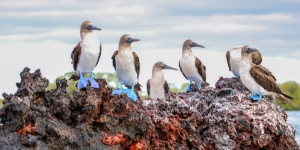The most enjoyable travel moments for me have been when I make a sudden connection - when I have an “Aha!” moment that brings together things that seem random or disconnected, but never really were. I was recently reminded of this connection while visiting a lodge along the Zambezi River just above the famous Victoria Falls in Zambia. There I had a chance to have a delicious drink of “hibiscus tea”, served to me as a welcome drink upon arrival at my lodge.
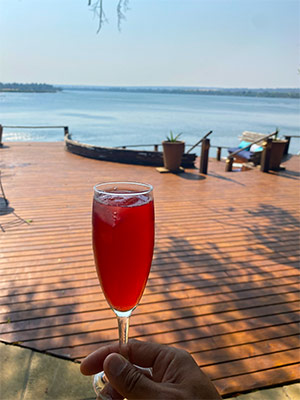
When I was a child, my father was a fine foods salesman and frequently brought home curiosities, one of which was called “hibiscus tea”. Being interested in nature since those early years and growing up in a gardening family, I always assumed that the hibiscus tea in that package my father brought home and that yielded a reddish liquid when the teabags were steeped was made from the flower petals of the horticultural hibiscus - the famous flower Hibiscus rosa-sinensis - often associated with Hawaii, and board shorts, and bred into a variety of other colours and varieties and that many of us have had around or inside our homes.
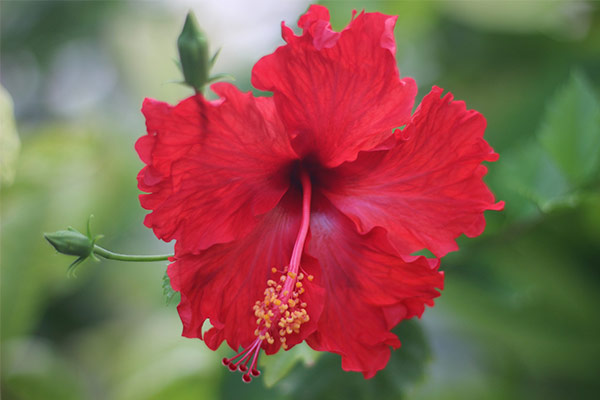
Hibiscus rosa-sinensis, sometimes called Chinese Hibiscus or simply “hibiscus”
While there are dozens of species in the genus Hibiscus, this one is the plant we commonly call hibiscus in English.
In March 2016, I went to the Gambia in western Africa for the first time. While exploring the countryside by foot, my local naturalist guide took us past some freshly planted farm plots where, among other things, he pointed out seedlings of a plant he called “hibiscus”. I asked him for what it was used, and he said it was used as a green vegetable and also to make a drink by the same name. It was interesting to me because the leaves of these seedlings were greatly divided/lobed and quite unlike the simply oval leaves of the horticultural hibiscus.
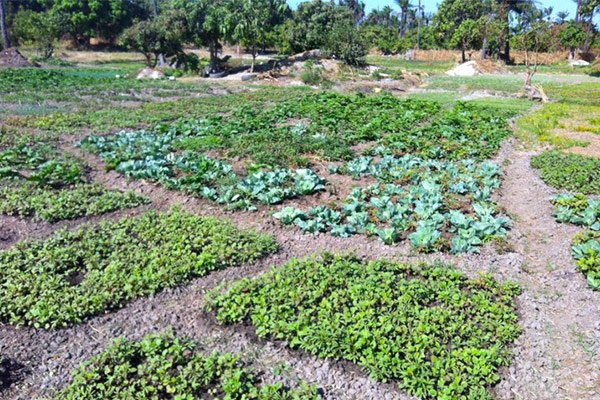
A plot with seedlings of a mysterious “hibiscus”. It's the bright green plant in the three closest rectangles here. It's hard to see but the first leaves are lobed with three "fingers".
I didn’t pursue the question further as it wasn’t my principal interest, but the question of hibiscus would take a turn later in 2016, when I would visit Jamaica to scout for our tour of the island. There I would try a bottled drink called sorrel. I was intrigued because the only “sorrel” I know is a common little garden weed with yellow petals that we regularly dug out from the far reaches of flower beds. This sorrel drink was deep red. It looked appealing so I drank some. I enquired as to what this sorrel drink was made from, and a Jamaican informed me it was also known as “hibiscus”. Sorrel was a popular drink in Jamaica as I would learn. Further intrigued, I later did some reading on this “sorrel” and found out that it was indeed made from a hibiscus, but not the common horticultural species we all know. What’s more, it is NOT made from petals at all!
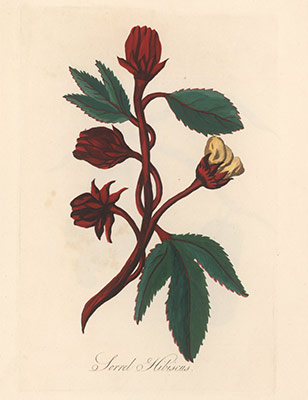
© Botanical Illustrator Lydia Byam
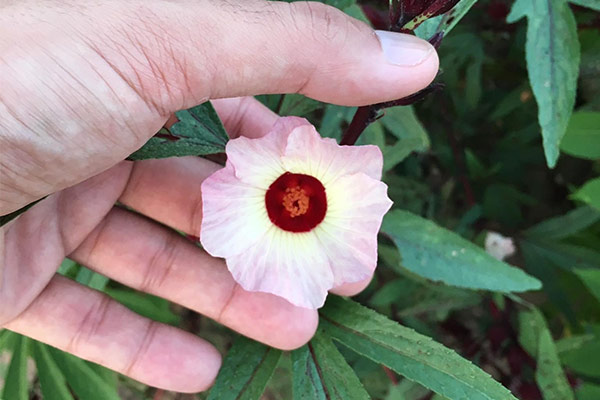
A Roselle blossom. Note the three-lobed leaf below my hand.
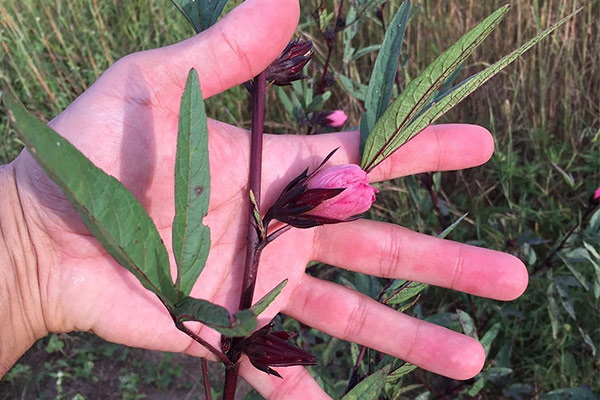
A spent blossom as seen from the side, also showing the deep crimson calyx surrounding the bottom of the pale pink blossom. The calyx will be picked and dried once mature.
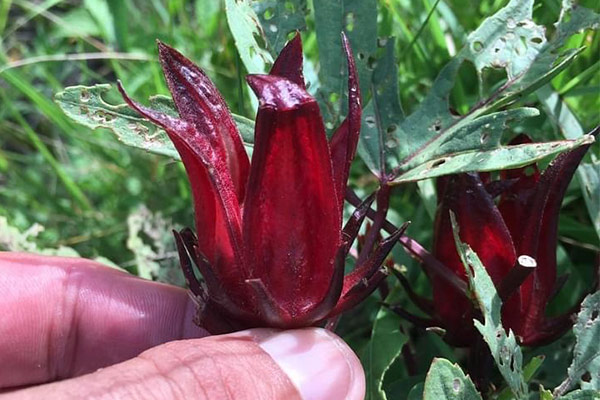
A closer look at a calyx after the pink petals of a spent Roselle blossom have fallen out. The red lobes thicken with time as the fruit held within matures.
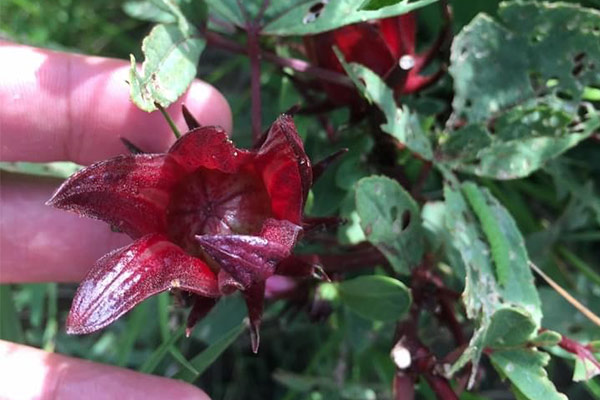
Here you can see a fruit developing within the calyx.
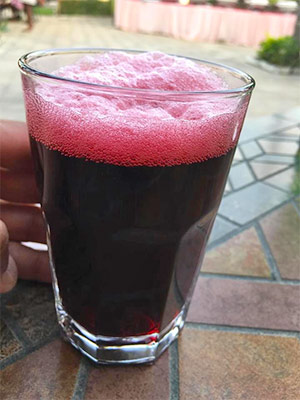
This is the Gambian version of sorrel, popularly called ‘wonjo’. I found however that it's served much more concentrated in the Gambia than in Jamaica. It had some mint added to it. It's delicious!
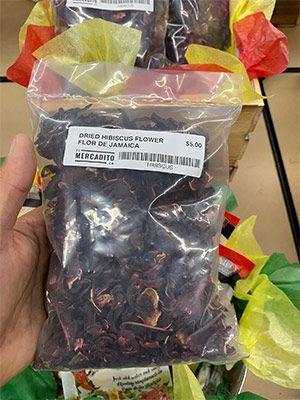
I recently found ‘dried hibiscus flower’ in a Latin-American food mart in Toronto. In Latin America, sorrel is well-known and called Flor de Jamaica (“flower of Jamaica”). Time to try it at home?
You can look for your opportunity to enjoy wonjo or sorrel on our Quest Nature Tours departures to the Gambia in November 2022 or Jamaica in March 2023!


